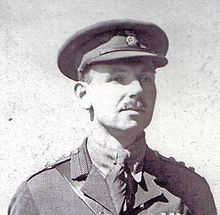This article possibly contains original research. (October 2015) |
William Howard Livens | |
|---|---|
 William Howard Livens | |
| Born | 28 March 1889 |
| Died | 1 February 1964 (aged 74) London, England[1] |
| Allegiance | United Kingdom |
| Service | British Army |
| Years of service | 1914–1919 |
| Rank | Captain[a] |
| Battles / wars | First World War |
| Awards | Distinguished Service Order Military Cross |
| Other work | Consultant to Petroleum Warfare Department in Second World War |
William Howard Livens, DSO, MC (28 March 1889 – 1 February 1964[5][6]) was an engineer, a soldier in the British Army and an inventor particularly known for the design of chemical warfare and flame warfare weapons. Resourceful and clever, Livens' successful creations were characterised by being very practical and easy to produce in large numbers. In an obituary, Sir Harold Hartley said "Livens combined great energy and enterprise with a flair for seeing simple solutions and inventive genius."[7]
Livens is best known for inventing the Livens Projector, a simple mortar-like weapon that could throw large drums filled with inflammable or toxic chemicals. In World War I, the Livens Projector became the standard means of delivering gas attacks and it remained in the arsenal of the British army until the early years of the Second World War.[8]
- ^ Obituary, by Sir Harold Hartley. The Times newspaper, 6 February 1964 p.14 column F.
- ^ Cite error: The named reference
Western_Front_Associationwas invoked but never defined (see the help page). - ^ Croddy 2001, p. 138.
- ^ Banks 1946, p. 17.
- ^ "No. 43320". The London Gazette. 12 May 1964. pp. 4173–4173.
- ^ Bourne 2001, p. 175.
- ^ Cite error: The named reference
Obituary_Hindelwas invoked but never defined (see the help page). - ^ The Use of Gas in the Field, 1940
Cite error: There are <ref group=lower-alpha> tags or {{efn}} templates on this page, but the references will not show without a {{reflist|group=lower-alpha}} template or {{notelist}} template (see the help page).